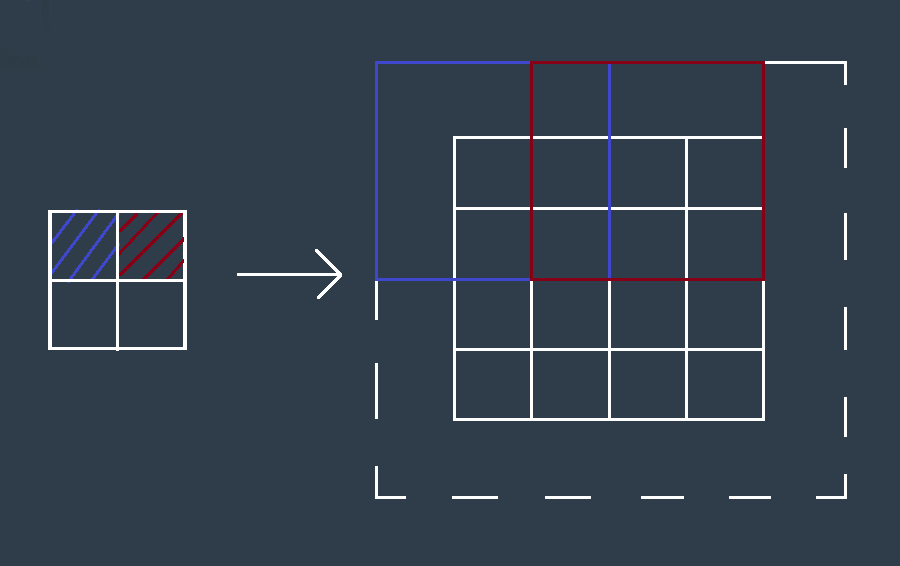07. Transposed Convolutions
Transposed Convolutions
Transposed Convolutions help in upsampling the previous layer to a higher resolution or dimension. Upsampling is a classic signal processing technique which is often accompanied by interpolation . The term transposed can be confusing since we typicallly think of transposing as changing places, such as switching rows and columns of a matrix. In this case when we use the term transpose , we mean transfer to a different place or context.
We can use a transposed convolution to transfer patches of data onto a sparse matrix, then we can fill the sparse area of the matrix based on the transferred information. Helpful animations of convolutional operations, including transposed convolutions, can be found here .
As an example, suppose you have a 3x3 input and you wish to upsample that to the desired dimension of 6x6. The process involves multiplying each pixel of your input with a kernel or filter. If this filter was of size 5x5, the output of this operation will be a weighted kernel of size 5x5. This weighted kernel then defines your output layer.
However, the upsampling part of the process is defined by the strides and the padding. In TensorFlow, using the tf.layers.conv2d_transpose, a stride of 2, and "SAME" padding would result in an output of dimensions 6x6.
Let's look at a simple representation of this. If we have a 2x2 input and a 3x3 kernel; with "SAME" padding, and a stride of 2 we can expect an output of dimension 4x4. The following image gives an idea of the process.

The 3x3 weighted kernel (product of input pixel with the 3x3 kernel) is depicted by the red and blue squares, which are separated by a stride of 2. The dotted square indicates the padding around the output. As the weighted kernel moves across, the stride determines the final dimension of the output. Different values for these will result in different dimensions for the upsampled output.
In the next quiz, you will test this out yourself!
Property of Differentiability
A differential function is a function whose derivative exists at each point in its domain, with continuity as one of its most critical properties.